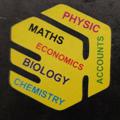Question 1 :
Assertion: If refractive index of one medium is equal to refractive index of second medium, then beam does not bend at all.
Reason: The bending of light does not depend on refractive indices of media.
Question 2 :
To observe the hydra bud clearly. Raju should see it first under the low power lens and then under the high power lens in order to see 
Question 3 :
Which of the following term is not associated with a lens ?
Question 5 :
When the face is very close to the spoon the image formed by the outside bulged part?
Question 7 :
What is the power of the lens, if the far point of a short sighted eye is $$200\ cm$$?
Question 8 :
If $$f$$ is the focal length of a lens, then the power of the lens is equal to
Question 9 :
A spherical mirror and a thin spherical lens have each a focal length of $$-15$$ cm. The mirror and lens are likely to be :<br/>
Question 10 :
When a ray of light passes through a rectangular slab, made up of some transparent material other than glass, the emergent ray is
Question 12 :
A man is unable to see closer than 1 m clearly.The power of lenses of his spectacles should be to see nearby object.
Question 13 :
The frequency of a light wave in a material is $$2\times 10^{14} Hz$$ and wavelength is $$5000\overset {\circ}{A}$$. The refractive index of material will be :
Question 14 :
The focal length of a convex lens is $$25cm$$. Find its power with sign.<br/>
Question 16 :
If the power of a lens is $$0.1\;D$$, its focal length is
Question 17 :
The value of the focal length of the lens is equal to the value of the image distance when the rays are
Question 19 :
A concave mirror of focal length $$f$$ (in air) is immersed in water $$(\mu=4/3).$$ The focal length of the mirror in water will be
Question 20 :
The incident ray, the _______ ray and the normal lie in the same plane during refraction.
Question 21 :
A student performs an experiment to study the nature of the image formed by a convex lens. <br/>Arrange the steps in the proper sequence.<br/>(a) Place the lens on a V-shaped stand.<br/>(b) Place the object at $$2F_{1}$$.<br/>(c) Place the object between $$2F_{1}$$ and $$F_{1}$$.<br/>(d) Determine the focal length of the lens by focusing the lens to a distant object like a tree.<br/>(e) Adjust the position of the screen behind the lens to obtain a clear image and study the nature of the image.<br/>(f) Mark the positions of $$F_{1}, 2F_{1}, F_{2}$$   and $$ 2F_{2}$$.<br/>(g) Focus the lens to a distant object like a tree.<br/>(h) Place the object just behind $$2F_{1}$$.<br/>(i) Place the object at $$F_{1}$$.<br/>(j) Place the object between $$F_{1}$$ and optic centre of the lens and observe that the image formed is virtual.<br/>
Question 22 :
A ray of light is incident from one medium $$(\mu = 1.5)$$ into another medium. If the angle of incidence and refraction are, respectively,$$60$$and$$45$$, thenwhatwill be the refractive index of the denser medium?
Question 24 :
Calculate the focal length of a convex lens of power 2D.<br/>
Question 25 :
A slide projector gives a magnification $$10.$$ If a slide of dimensions $$3$$ cm $$\times$$ $$2$$ cm is projected on the screen the area of image screen is
Question 26 :
If two $$+5D$$ lenses are mounted at some distance apart, the equivalent power will always be negative if the distance is
Question 27 :
A concave mirror is made from a hollow sphere of radius of curvature 30 cm.  If an object of height 2 cm is placed at 10 cm from the pole of the mirror, determine the size of the image :
Question 28 :
Light ray that strikes surface of a glass slab normally. Will it deviate from its path? Yes or No<br/>
Question 29 :
If the angle of incidence is i and that of refraction is r. Then the speed of light in the medium to which the light is reflected from air is?
Question 30 :
The sun subtends an angle of $$(1/2)^o$$ at earth.The image of the sun is obtained on a screen using a converging lens of focal length 1.5 cm.The diameter of the image will be :
Question 31 :
Air has refractive index $$1.0003$$. Find the thickness of air column which will contain one more wavelength of yellow light of $$6000$$ $$A^0$$ than in same thickness of vacuum.
Question 32 :
A $$4.5 cm$$ needle is placed $$12 cm$$ away from a convex mirror of focal length $$15 cm$$. Find the location of the image and the magnification.
Question 33 :
A short linear object of length $$b$$ lies along the axis of a concave mirror of focal length $$f$$ at a distance u from the pole of the mirror. The size of the image is approximately equal to :<br>
Question 34 :
A small object of linear dimension $$x$$ lies on the axis of an optical mirror of local length $$f$$ at a distance $$a$$ from mirror. The linear dimension of image:
Question 35 :
In the table below, column I lists various mirrors  and lenses and column II their uses, qualities or properties.<br/><table class="wysiwyg-table"><tbody><tr><td>column  I</td><td>Column II</td></tr><tr><td>I. Plane mirror</td><td>A. Feels thinner in the middle.</td></tr><tr><td>II. Concave mirror</td><td>B. Always forms virtual image.</td></tr><tr><td>III. Convex mirror</td><td>C. Always forms virtual image of smaller size.</td></tr><tr><td>IV. Concave lens </td><td>D. Is used by dentists to examine teeth.</td></tr><tr><td>V. Convex lens</td><td>E. Can be used as reading glass.<br/></td></tr></tbody></table>The correct matching is:



































